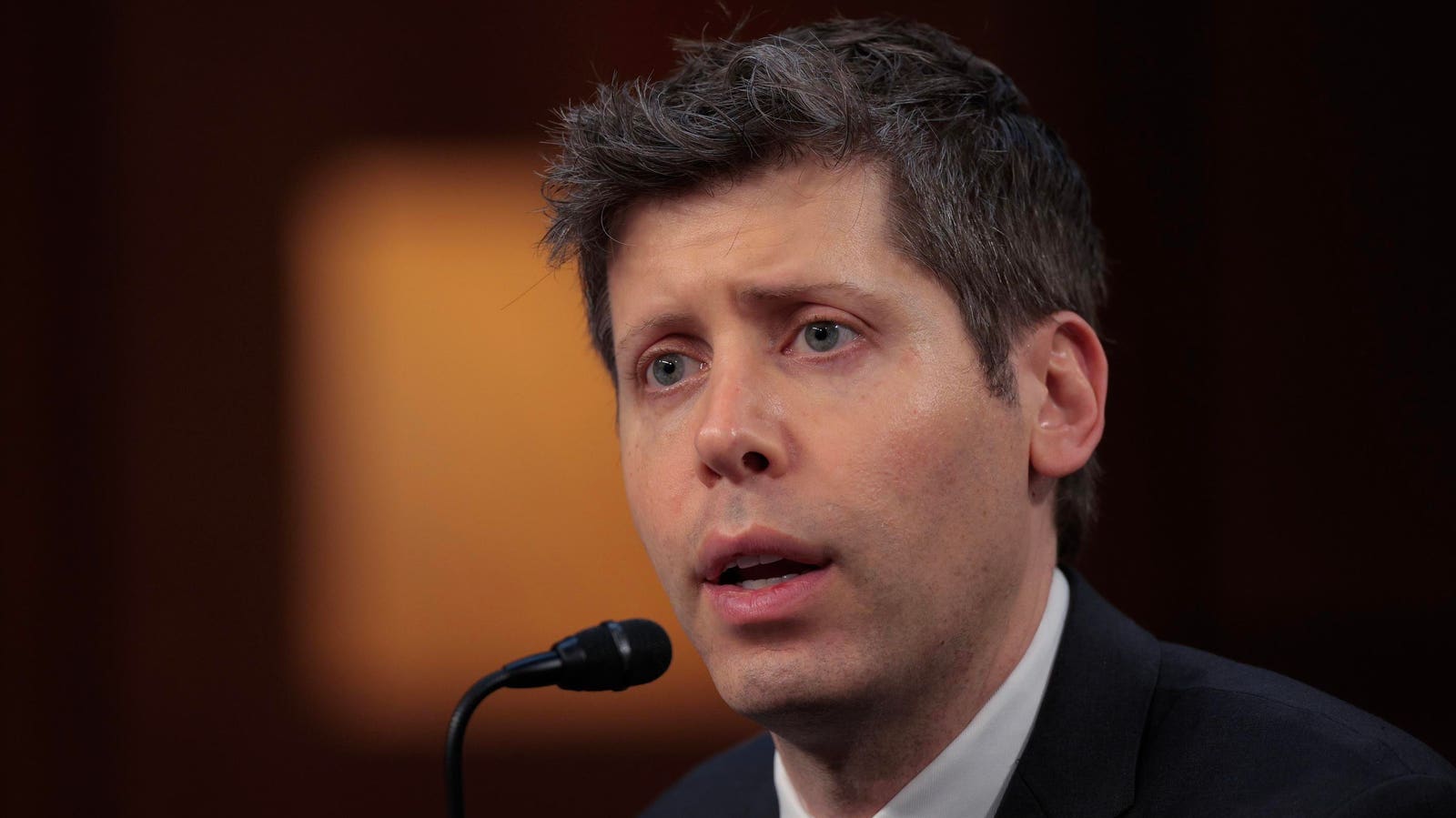In my previous piece I identified four facts I believe must be addressed for any energy policy and its associated narrative to be politically viable for the vast majority of the American public: (1) climate change is a relatively low priority for most Americans, (2) America is a center-right country, (3) it is becoming more polarized, and (4) the appetite to personally pay to address climate change is quite low. Here I will dig into this deeper, again based on data from an excellent paper “The Science vs. the Narrative vs. the Voters: Clarifying the Public Debate Around Energy and Climate” by Roger Pielke, Jr. and Ruy Teixeira of the American Enterprise institute(AEI), supplemented by more detailed data kindly provided by Dr. Teixeira. The paper is based on a survey of over 3,000 voters that was conducted for AEI by YouGov between September 20-26, 2024.
Using data from this survey and a variety of other sources I suggest four basic elements for a U.S. energy policy:
- An “all-of-the above” approach to energy sources.
- Energy choices should be based on economics, not ideology.
- Cost and availability should determine the energy mix.
- Getting the U.S. to net-zero as quickly as possible is a low priority.
I will provide data to support of each element, starting with the first one.
Digital generated image of multiple environmental rectangular cross sections with different types of energy supply. Sustainable city concept.
getty
An “All-of-the-Above” Approach to Energy Sources
Respondents were given three choices for the supply element of an energy policy:
- We need a rapid green industry transition to end the use of fossil fuels and replace them with fully renewable energy sources, regardless of the costs (22%).
- We need an “all-of-the-above” strategy that provides abundant and cheap energy from multiple sources, including oil and gas, renewables, and advanced nuclear power (55%).
- We need to stop the push to replace domestic oil and gas production with unproven green energy projects that raise costs and undercut jobs (23%).
The anti-fossil fuel and anti-renewables crowds are less than the “all-of-the-above-crowd.” An energy policy that ignores this will get traction depending on which party is in office but not beyond that. This is highly problematic since climate change is a forever issue and we need stable and long-term policies to deal with it, policies which can only be created in a bipartisan way.
While this may sound Pollyannish in our current polarized political environment, there is some encouraging data that suggests this is possible. Over 50% of voters across party affiliation and political ideology support the “all-of-the-above” approach. The numbers are 56%, 54%, and 53% for Democrats, Independents, and Republicans, respectively; they are 53%, 59%, and 51% for Liberals, Moderates, and Conservatives, respectively. Not surprisingly, Democrats (37%) and Liberals (42%) load heavy on “renewables only” and Republicans (40%) and Conservatives (43%) load heavily on “fossil fuels only,” and Independents and Moderates are in between.
This preference for an “all-of-the-above” strategy is supported by data from when respondents were asked about the goals for the future energy supply. Nearly three quarters (71%) preferred to “Use a mix of energy sources including oil, coal and natural gas along with renewable energy sources” vs. 29% who preferred to “Phase out the use of oil, coal and natural gas completely, relying instead on renewable energy sources such as wind and solar power only.” There’s the usual skew with those expressing preference for a mix of sources being 52% for Democrats, 64% for Moderates, and 91% for Republicans; the numbers by ideology at 47% for Liberals, 71% for moderates, and 92% for conservatives.
As a practical matter, there will be a mix of energy sources for years to come. The U.S. Energy Information Administration produces periodic reports which include projections for energy sources until 2050. Here are the latest projections prepared after the Inflation Reduction Act (IRA) was passed and before much of it was rolled back in the One Big Beautiful Bill. Between 20005 and 2020 the main trend is the replacement of coal by natural gas. The latter is about half as carbon intensive per unit of energy produced although the exact amount depends up how much methane is leaked during production since it is about 80 times more potent than CO₂ over a 20-year period. U.S. production is much cleaner than the global average but lags the best performers of the Netherlands and Norway.
All of the four projections show an energy mix, as well as dramatic increases in solar and wind. Coal continues to decline. The big variability is the proportion of these two to natural gas. There are many variables which will determine this including government policies, relative prices, technological developments, and consumer preferences. Tradeoffs will be inevitable, such as price, availability, and reliability vs. amount of carbon emissions. The discussion we should be having in America is about the relative proportions and the tradeoffs involved in each. Those supporting a “renewables-only” future are dreaming, just as are those who only want to “Drill, Baby, Drill.” We need a narrative that is neither of these.
U.S. Net Energy Generation by Fuel Type
U.S. Energy Information Administration
Energy Choices Should be Based on Economics, not Ideology
Opinion varies on what the total mix should be, as shown in Table 2 for energy preferences When combining first and second choices solar is most popular at 59%, natural gas (45%) and wind (43%) are about the same, followed by nuclear (27%) and coal (17%) at the bottom. More detailed data is provided in Table A1 “Voters’ Ranking of Energy Sources” in the report. The top two choices for Republicans and Conservatives are, in order, natural gas and nuclear. Solar ranks third, coal fourth and wind fifth. For Democrats, Independents, Liberals, and Moderates the rank order is solar, wind, natural gas, nuclear, and coal. These two groupings are essentially mirror images of each other. But it’s worth noting that solar and natural gas comprise the largest two sources of energy in all scenarios except for High Uptake and equally acceptable to each group with different preferences. This suggest a second element for U.S. energy policy which is to expand solar as much as is economically feasible, without taking actions to interfere with that, and to produce as much natural gas as is needed as cleanly as possible.
Voters’ Energy Preferences
American Enterprise Institute
It is revealing to compare these stated preferences to what is actually happening on the ground despite the loud rhetoric on both sides. California leads the nation in solar production at 68,816 GWh in 2023 but followed by Texas at 31,739 GWh and Florida at 17,806 GWh. But whereas the growth rate from 2022 to 2023 was 9% for California, it was 25% and 28% for Texas and Florida, respectively. Others in the top 10 are the purple states of North Carolina, Arizona, Nevada, Georgia and Virginia and the blue states of New York (ranked 8th) and Massachusetts (ranked 10th).
In terms of wind production, five of the top 10 states are red (Texas, Iowa, Oklahoma, Kansas, and North Dakota) and five are blue (Illinois, California, Colorado, New Mexico, and Minnesota). The top four are, in order, Texas, Iowa, Oklahoma, and Kansas. Texas dominates with 10,545 GWh. When solar and wind are combined for 2024, five of the top six are in Texas, Iowa, Oklahoma, Kansas, and Florida. Once again, Texas (with a population of about 32 million) dominates at 169,442 GWh, more than twice that of Number Two California (with a population of about 40 million) at 79,544 GWh. Whie it’s true that government policies can tip the scales on energy sources, over the long term economics, not ideology will prevail.
Cost and Availability Should Determine the Energy Mix
The question then becomes what consumers expect from an ‘all-of-the-above” policy for energy supply. When asked “What is most important to you about the energy you consume?” cost (37%) and availability (36%) are far more important than the effect on climate (19%) and the effect on U.S. energy security (6%). Democrats and Liberals rank the top three about the same at around 30%. Republicans and Conservatives rank the top two about the same at 40-45% but put climate change and energy security both at 5-8%. A third element of U.S. energy policy needs to be a focus on cost and availability.
Getting the U.S. to Net-Zero as Quickly as Possible is a Low Priority.
The fourth element of U.S. energy policy is the relative importance of different objectives for reducing the effects of climate change. Table 3 makes clear that a narrative grounded in getting the U.S. to net zero as quickly as possible is a complete non-starter. Less than one-third (29%) of voters think it is very important, and this is heavily driven by Democrats (48%) and Liberals (51%). It’s also worth noting that less than one-third of Independents (27%) and Moderates (29%) see this very important; only about in 10 Republicans and Conservatives see it this way. The top considerations are keeping costs low to consumers and increasing jobs and economic growth. Both are more important than net-zero for both Democrats (57%) and Liberals (56%). Low costs are especially important to Republicans (76%) and Conservatives (77%) suggesting that advocates for solar and wind should put more emphasis on lowering costs than reducing carbon emissions.
Voters’ Views on Efforts to Reduce the Effects of Global Climate Change
American Enterprise Institute
Increasing jobs and economic growth is the one item on which there is virtually no difference:
- Democrats (58%); Liberals (56%)
- Independents (54%); Moderates (60%)
- Republicans (62%); Conservatives (62%)
This should be a major talking point for solar and wind. A related one is that efforts at the federal level to restrict solar and wind for ideological reasons will both increase costs and cut jobs. An analysis by Energy Innovation of the One Big Beautiful Bill found that over the next 10 years energy bills for all American households could increase by $170 billion (Texas and Florida are among the hardest hit states), we will lose 840,000 jobs by 2030 and another 790,000 by 2035, and added energy generating capacity will be less by 120 GW by 2030 and 330 GW by 2035. Those objecting to solar and wind for ideological reasons are working against their own self-interest.
More Democrats (61%) and Liberals (65%) think making sure proposals help lower-income communities is very important compared to Republicans (31%) and Conservatives (29%) with Independents (48%) and Moderates (45%) their usual in between. The reverse is true for limiting the burden of regulations on business. Just under half of Republicans and Conservatives feel this is very important compared to about one-fifth of Democrats and Liberals with Independents and Moderates roughly between the two. These results aren’t surprising to me.
What did surprise me is the small percentage of Republicans (34%) and Conservatives (33%) who think protecting the quality of the environment for future generations is important (Democrats are at 75% and Liberals are at 81%). I asked a conservative friend about this, and she wondered about the use of the word “protecting” and what this might connote for conservatives. One possibility is they see it as “protecting at all costs.” In a January 2024 survey (about which I’ll be writing a separate piece) of young rural conservatives commissioned by the American Conservation Coalition. Its “mission is to build the conservative environmental movement and it has 85,000 young conservative members across all 50 states with two of the most active ones being Texas and Florida. 40% said the environment should be protected even if it limits economic growth and 52% it should be but only if it doesn’t limit economic growth. There can obviously be tradeoffs here and people will have different relative preferences.
I will conclude where I started by proposing four basic elements of a U.S. energy policy to address climate change:
- An “all-of-the above” approach to energy sources.
- Energy choices should be based on economics, not ideology.
- Cost and availability should determine the energy mix.
- Getting the U.S. to net-zero as quickly as possible is a low priority.
I’m a “glass is half full guy” and think it is possible to create broad bipartisan support for such a policy. But it will take people with different political views to talk to each other than ignore or scream at each other.









